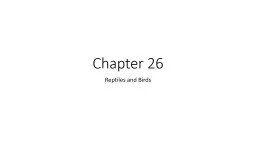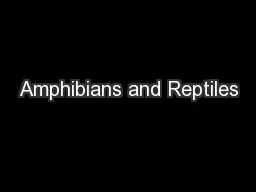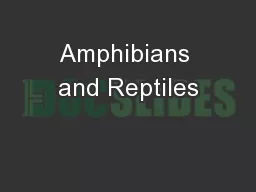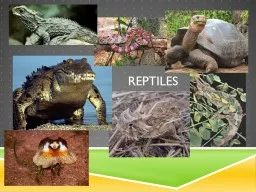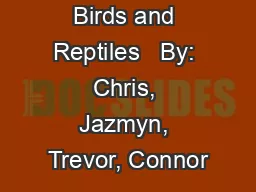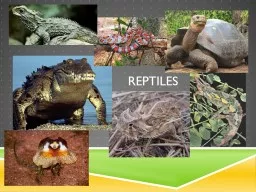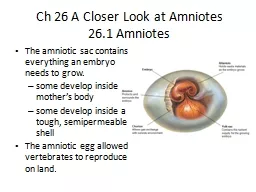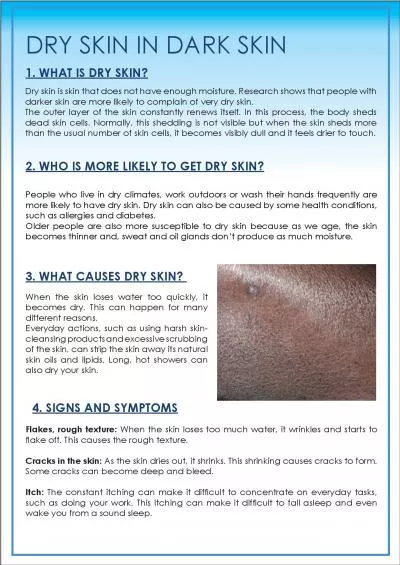PPT-Chapter 26 Reptiles and Birds Reptiles Skin is smooth and dry, covered in scales
Author : celsa-spraggs | Published Date : 2019-11-05
Chapter 26 Reptiles and Birds Reptiles Skin is smooth and dry covered in scales Helps prevent the evaporation of water from its body First vertebrates with adaptations
Presentation Embed Code
Download Presentation
Download Presentation The PPT/PDF document "Chapter 26 Reptiles and Birds Reptiles S..." is the property of its rightful owner. Permission is granted to download and print the materials on this website for personal, non-commercial use only, and to display it on your personal computer provided you do not modify the materials and that you retain all copyright notices contained in the materials. By downloading content from our website, you accept the terms of this agreement.
Chapter 26 Reptiles and Birds Reptiles Skin is smooth and dry, covered in scales: Transcript
Download Rules Of Document
"Chapter 26 Reptiles and Birds Reptiles Skin is smooth and dry, covered in scales"The content belongs to its owner. You may download and print it for personal use, without modification, and keep all copyright notices. By downloading, you agree to these terms.
Related Documents

